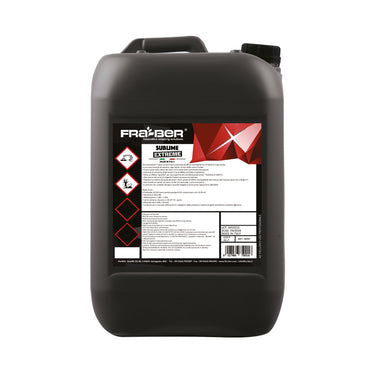
What does it mean to polish your car? Simply said, polishing your car is an essential part of exterior maintenance and restoration, leaving your vehicle with a smooth and glossy finish while removing minor imperfections like scratches. But with various types of car polish available, it's important to know how to use them effectively and choose the right one for your car. In this article we will explore the different types of polishes and how to use them.
What Does Car Polish Do?
Car polish helps to smooth out the surface of your car’s paint by removing minor scratches, oxidation, and swirl marks. The difference surface sealants and waxes compared to polish is that sealants and waxes add a protective layer, while polish is used to correct, shine and prepare the surface for protection. It is important to regularly polish your car looking because it helps keep it looking new while maintaining the appearance of the paint.
Types of Car Polish
Polishing a car does not just involve slapping some polish onto the car and getting instant results. There are different types of polishes which are used for specific purposes in the polishing process. Let's take a look at the different types of polishes:

1. Abrasive Polishes
Also known as 'cutting polish', abrasive polish is used to cut into the paint in order to remove surface imperfections and to strip away any coatings or waxes on the surface. Abrasive polishes vary in cutting and stripping intensity and can be categorized as follows:
- Heavy Cut Polish: Best for deep scratches and heavily oxidized paint.
- Fine/Medium Cut Polish: Ideal for moderate scratches and swirls.
- Finishing Polish: Used for light surface imperfections and usually the last step of the process, that produces a high gloss finish.
Types of abrasive polishes- Innovacar F1 Force One, Rupes DA Coarse Compound, Koch Chemie Heavy Cut, Servfaces Cut Polish.
2. Non-Abrasive Polishes
Opposite to abrasive polishes, non-abrasive polishes do not contain cutting and stripping particles, making them suitable for light paintwork correction. These polishes enhance gloss but are not used for the removal of defects like deep scratches.
Types of non-abrasive polishes- Rupes UNO Pure, ServFaces Finish Polish, Koch Chemie Finish Spray, Innovacar P1 Polish Up.

3. All-in-One Polishes
Also known as a 'one-step polish', these polishes combining cleaning, polishing, and protecting in one product. If you require a quick detailing job, then all-in-one polishes would be the go-to. They offer mild paint correction and leave behind a protective layer, saving time for those who want a faster and easier process.
Types of all-in-one polishes- Innovacar A1: All in One, Koch Chemie One Cut & Finish, Rupes UNO Protect.

4. Glazes
Glazes are not usually classified as polish but are often used together. Glazes are used to fill in fine scratches and imperfections, creating a smooth, glossy surface. However, they just fill in the imperfections and do not actually correct them. Glazes are a quick fix, but do not have the removal effects as polish.
Recommended: Innovacar G1 Glossy.

How to Use Car Polish
1. Clean the Car:
Before beginning the polishing process, it is extremely important to clean the car effectively. There cannot be any dirt and surface contaminants like oil and grime on the paint when polishing a car. The dirt and contaminants can mess up the gloss effect and drag the particles across the surface when polishing, causing further damage.
2. Apply the Cutting Polish:
When polishing a car, you can use your hand or use a machine polisher. Using a machine polisher (if available) is the preferred option because you will get better results, and it will get done quicker. Simply, apply a small amount of polish to a foam or microfiber cutting pad. Work in small sections, using circular or back-and-forth motions to evenly spread the product.
3. Use the Finishing Polish:
After you have finished the cutting step and removed all the deep imperfections and scratches, it is time to use the finishing polish. Apply the same way as the cutting polish, by using a small amount at a time and working in small sections. This step will leave that perfect gloss/shine on the paint.
4. Buff Off the Polish:
Once you’ve polished the section, use a clean microfiber cloth to buff off the remaining polish, revealing a glossy surface. Change the cloth regularly while buffing, otherwise you will just be adding more polish to the car instead of spreading it in properly.
5. Finish with a Coating, Wax or Sealant:
After polishing, apply a coating, wax or sealant to protect the freshly polished paint and enhance the shine.
When You Should Polish Your Car
It is recommended that you should polish your car about 1-2 times per year, depending on your car's condition and usage. Avoid over-polishing because it may cause the paint to become thinner and strip away.
Conclusion
Car polishing is an important step in maintaining your vehicle’s exterior, improving both its appearance and longevity. Choosing the right type of polish based on your car’s needs ensures the best results. Whether you're correcting paint defects or just boosting shine, understanding how to properly use polish will keep your car looking its best.











